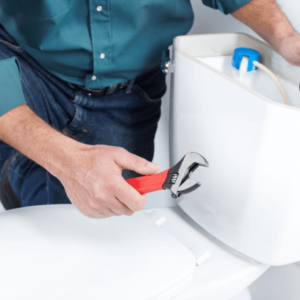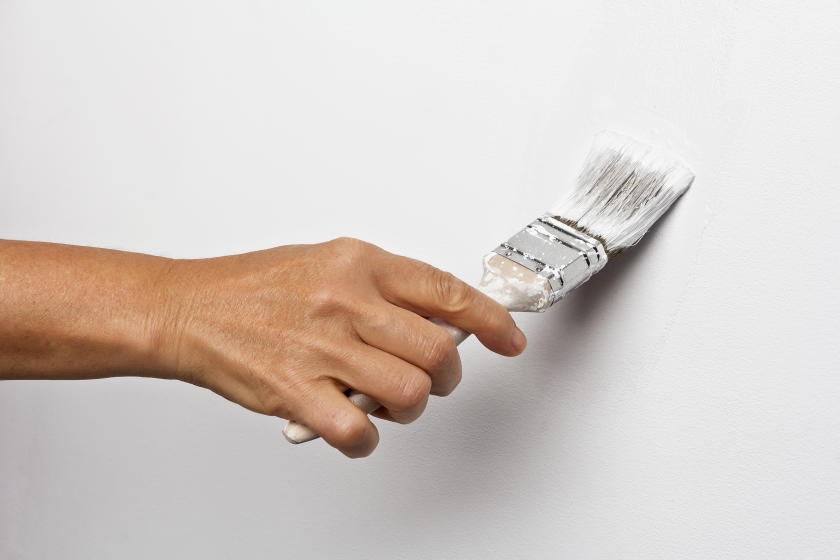Maintaining the rich color and smooth finish of your home’s interior doesn’t mean you have to repaint the whole room to fix the dents, dings, scratches and marks that can, over time, mar your walls’ surfaces.
By using the proper technique and the right color, you can touch up select spots of your wall paint, and keep your walls looking flawless and freshly painted.
Step 1: Clean the Surface
Before you make repairs, clean the area with a sponge, mild detergent and water. Dirt, grime and dust can build up on the wall’s surface, which can affect paint adhesion when you begin touching it up. Lightly wipe the work area with the soapy sponge and then dry it with a clean towel before proceeding.
Step 2: Make Repairs
Dents, small holes (nail holes, etc.) and deeper scratches can be filled in with spackling compound. Use a piece of fine-grit sandpaper and lightly smooth the surface around the area to be repaired. This will help to remove any fragments or raised portions of the wall. Next, open a container of premixed spackling compound and scoop up a small amount of it with the edge of a putty knife. Use just enough to fill in the hole or crack. Put the compound-covered blade of the putty knife at a 45-degree angle to the wall and spread the compound over the hole or crack in a smooth, feathering motion. Do this until the hole is completely filled in. Scrape away excess compound from the wall with your putty knife with the blade at a 90-degree angle to the wall. Wipe any remaining excess with a damp cloth before it sets. It will take a few hours for the patch to properly set. If the patch is slightly raised from the rest of the surface, lightly sand it again with fine-grit sandpaper.
If you’re working on holes that are 2″ or greater in diameter, you may need to purchase or make a wall-repair patch and apply it before using joint compound to seal it in place. See How to Patch Drywall.
Step 3: Prime
You must now prime the repaired areas for optimal paint adhesion and color blending. Without primer, the touched-up spot will stand out from the rest of the painted surface. Choose a high-quality, interior latex primer, such as True Value EasyCare® Interior Primer/Sealer. Use a small or medium-sized paintbrush (depending on the size of the repaired area) to apply a layer of primer over the spot. Try to keep the size of the primed area confined to the dimensions of the repair for best results. Let the primer dry completely, as recommended by the manufacturer’s directions.
Step 4: Use the Same Paint
It can be difficult to match the color exactly if the touch-up paint is not from the same can. So whenever possible, always store leftover paint so that you can use it for touch ups when needed to get the best results. Apply the same paint used to paint the wall its current color. If you don’t have any of the original paint left, you can try to match it with the same brand, color and finish. You can also go to your local True Value hardware store and purchase True Value EasyCare® Latex Interior Paint which can be tinted to match your walls’ colors using color match technology.
Use the same applicator that was used to paint the last coat of paint on the wall that you’re touching up. This helps the touched-up area blend with the surrounding surface. If you used a roller, use a roller again (a small-sized roller offers better control). If you used a brush, use a brush again. This will help replicate the surface texture. Use as little paint as possible and apply small amounts at a time. When using a brush, “feather” the edges, beginning at the inside of the touch-up, moving out toward the edges. Feathering is a technique where you extend your brush strokes slightly beyond the repaired area to blend into the surrounding paint for a smooth transition.
Helpful Tips
For touch-ups of small holes or marks (less than an inch), you can use an foam paint brush to lightly dab paint on the spot.
Always take note of the paint finish (flat, eggshell, semi-gloss, gloss, etc.). The slightest difference in sheens can make your touch-up stand out. Gloss finishes are especially hard to touch up.
Reducing paint by 10 to 15 percent with a paint reducer can often help the touch-up paint blend in. Use a paint reducer recommended by the paint manufacturer.
If the results of your touch-up aren’t satisfying, repainting the room is always an option. See Paint a Room for painting tips. In some cases, you might be able to match the room color and paint by painting just one wall from corner to corner. The naked eye most likely won’t be able to tell the difference between walls after the new paint has dried and aged. High-traffic areas will require many touch-ups, so it may be a good idea to repaint them.
Safety Alert!
Open the windows to make sure you’ll be priming and painting in a well-ventilated area.
Step 5: Check Touch Ups after Drying
Let the paint dry completely for the time recommended by the paint manufacturer. Then check to see how visible the touch-ups are by looking at the wall at an angle. Check its appearance in both natural and artificial light at different times of the day. If you think too critically, you may always see the touched-up spots, but someone visiting your home may not be able to. So be liberal in your assessment.
Well done! You’ve successfully touched up your walls without repainting.
Project Shopping List
Here’s what you’ll need to complete this project successfully.
- Sponge
- Mild detergent
- Towel
- Spackling compound
- Fine-grit sandpaper
- Putty knife
- Cloth
- Wall-repair patch (optional)
- Joint compound
- EasyCare® Interior Primer/Sealer
- EasyCare® Latex Interior Paint
- Small or medium-sized paintbrush
- Small roller applicator (optional)
- foam paint brush (optional)
- Paint reducer












